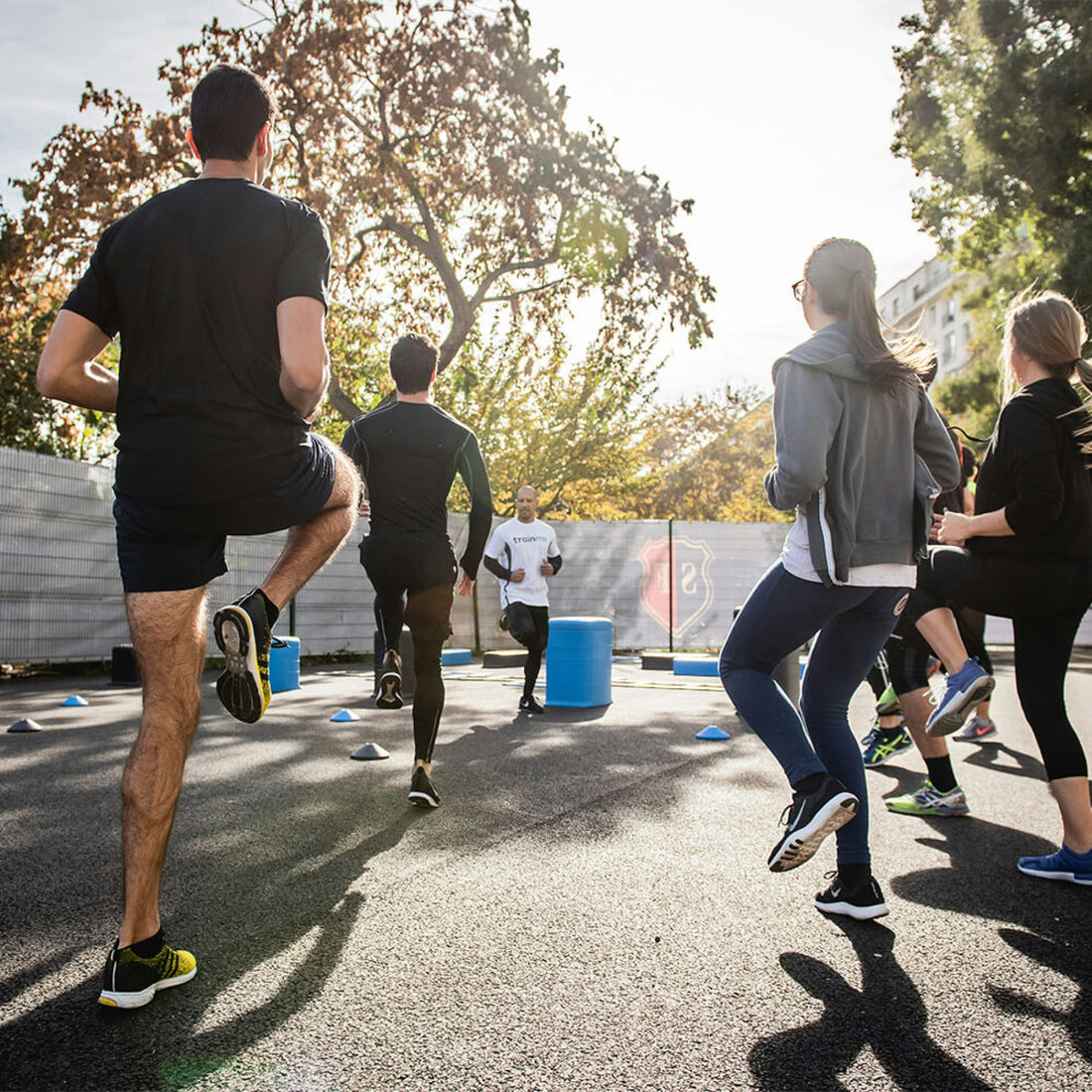
Cardio workout
Share
Aerobic exercise is the best way to reduce the risk of all-cause mortality. Keep your effort and heart rate at a moderate level while training for maximum benefit.
Complete this habit by performing a cardio workout a few times a week. You should reach a total weekly cardio time of a minimum of 150 min (staying in zone 2 of your heart rate).
Cardio is an aerobic exercise and one of four pillars of exercises.
To attain the most benefits from a cardio workout, the heart rate should reach and stay in Zone 2 during the exercise. Zone 2 is one of the five heart rate zones that can be entered during a workout. It is the highest metabolic workout you can sustain while keeping your lactate level below two millimoles per liter.
Professional athletes use lactate meter to ensure their heart rate stays in zone 2. But you can check whether you are in zone 2 by noticing if you can keep a conversation while performing cardio (it should still be noticeable that you are exercising). If you feel that talking becomes difficult, that means your workout is too intense, and you should slow down.
There are many proven ways to raise a heart rate, so you can stick to one or switch between a few when wanted:
- Walking
- Jogging
- Running
- Cycling
- Rope skipping
- Power walking
- Stair climbing
The recommendation is to maintain a minimum of 150 minutes of moderate cardiovascular exercise each week. But don't limit yourself; reaching 300 minutes a week can bring you peak benefits!
By the way, when doing cardio outside in the daylight, you can also check off the "Daylight viewing" habit.
Use our stopwatch tool to track your exercise time.
The lousy mood should not stop you from cardio - this workout alone will lift your spirit! Bad weather should not be an obstacle either - you can choose to stay indoors and run in place or use our "Guided cardio workout @ home".
Impact
Brain Health
A scientific study analyzed 1 462 women and the relationship between their cardiovascular fitness and the risk of dementia over 44 years (midlife to late-life). Results indicate that high fitness delayed age at dementia onset by 9.5 years while medium fitness delayed dementia onset by 5 years.
Every single time the body moves, many neurochemicals are released, including dopamine, serotonin, and noradrenaline, that improve overall well-being. During aerobic exercise, a growth factor called brain-derived neurotrophic factor (BDNF) is also released. It fosters the growth of new brain cells in the hippocampus - a brain center responsible for learning and memory, reducing the risk of neurodegenerative diseases.
Telomere length
More than 20 observational studies examined the potential relationship between physical activity/exercise and telomere length. The research found that higher physical activity exhibits a longer leukocyte or skeletal muscle telomere length compared to a sedentary lifestyle, which is a positive sign. It is believed that telomere length may serve as a biological clock to determine the lifespan of a cell and an organism.
One significant study displayed differences between the telomere length of participants who are currently active compared to those who are not. The median telomere length was significantly higher for participants who were currently active. However, the differences were relatively small. Resistance training (e.g., bodybuilding, gymnastics), endurance (e.g., cycling, jogging), and other types of sport showed somewhat similar patterns. In contrast, individuals who engaged in the intensive activity (marathon sport, long-distance running) showed slightly higher telomere length values.
Any physical activity is a promising longevity factor, but intensity sports should be performed to lengthen the telomere high. Researchers observed that practicing sports for more than 10 years significantly affects relative telomere length.
Youthfulness
According to one biological aging study, people who regularly engaged in cardiovascular exercise were 5.43 years younger than those who didn't exercise.
Lehallier et al. Data mining of human plasma proteins generates a multitude of highly predictive aging clocks that reflect different aspects of aging. Aging Cell 2020. https://doi.org/10.1111/acel.13256
Arsenis, N. C., You, T., Ogawa, E. F., Tinsley, G. M., & Zuo, L. (2017). Physical activity and telomere length: Impact of aging and potential mechanisms of action. Oncotarget, 8(27), 45008–45019. https://doi.org/10.18632/oncotarget.16726
Saßenroth, D., Meyer, A., Salewsky, B., Kroh, M., Norman, K., Steinhagen-Thiessen, E., & Demuth, I. (2015). Sports and Exercise at Different Ages and Leukocyte Telomere Length in Later Life--Data from the Berlin Aging Study II (BASE-II). PloS one, 10(12), e0142131. https://doi.org/10.1371/journal.pone.0142131
Basso, J. C., Shang, A., Elman, M., Karmouta, R., & Suzuki, W. A. (2015). Acute Exercise Improves Prefrontal Cortex but not Hippocampal Function in Healthy Adults. Journal of the International Neuropsychological Society : JINS, 21(10), 791–801. https://doi.org/10.1017/S135561771500106X
Saint-Maurice et al. Association of Daily Step Count and Step Intensity With Mortality Among US Adults. JAMA 2020. https://doi.org/10.1001/jama.2020.1382
Helena Hörder et al. Midlife cardiovascular fitness and dementia. A 44-year longitudinal population study in women. 2018. https://doi.org/10.1212/WNL.0000000000005290